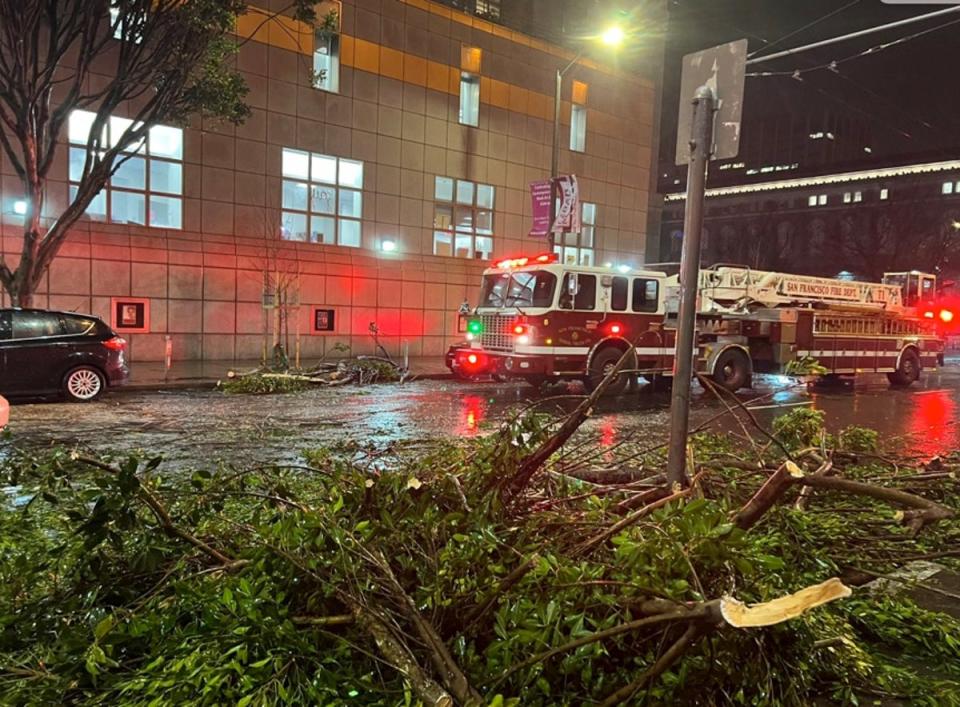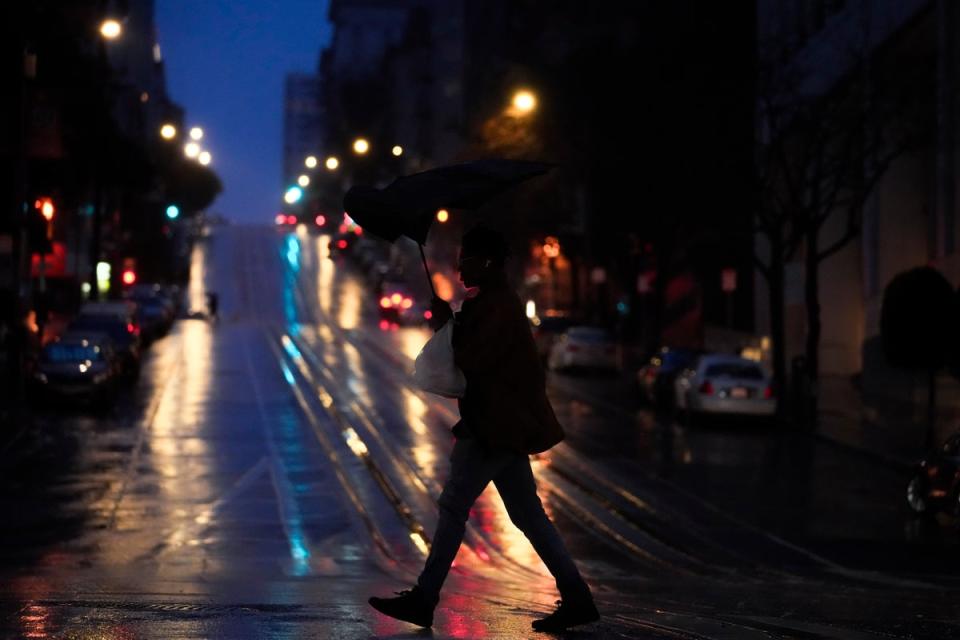Two killed in California ‘bomb cyclone’ as 160,000 in blackout
Two have been killed in California after a powerful bomb cyclone tore across the state on Thursday, packing powerful winds, heavy rain and snow.
A two-year-old was killed in Sonoma County when a redwood tree fell on the family’s mobile home, according to Occidental Volunteer Fire Department Chief Ron Lunardi. The parents were unharmed, said the fire chief.
In Fairfield, north of San Francisco, a 19-year-old woman was killed when her vehicle hydroplaned and hit a utlity pole, authorities reported.
California was under a state of emergency amid anticipated widespread flooding, mudslides, and power outages. As of Thursday afternoon, 160,000 customers were without power in the state, according to utility tracking site, Poweroutage.us.
“We anticipate this may be the most challenging and impactful series of storms to touch down in California in the last five years,” California Director of Emergency Services Nancy Ward said.
In San Francisco, hurricane-force winds toppled a Valero gas station. Footage showed the structure and at least two of its pumps being torn apart. The Bay Area Rapid Transit, commonly known as the Bart, warned commuters to expect delays and interruptions to service.
California Governor Gavin Newsom declared a state of emergency and ordered residents of high-risk coastal areas to evacuate their homes.
The emergency declaration enables the governor to mobilise the National Guard to assist in disaster response and to request immediate assistance from federal agencies for highway repairs and recovery efforts.
The National Weather Service (NWS) has warned that the severe weather will continue, with extreme conditions forecast into next week.

The conditions are being caused by a powerful atmospheric river streaming moisture over California, NWS reported. It will also mean extremely heavy snow rates, at more than three inches per hour, at elevations over 5,000 feet.
In northern and central California, travel would be dangerous and at times impossible in mountainous areas, NWS said.
With more than one inch of rain per hour on average, water levels were expected to rise rapidly bringing risks of flash flooding, and mud and rock slides. Wind speeds are forecast to top 50mph, leading to further power outages and more downed trees.
Meteorologists have warned residents in coastal areas and the Sacramento Valley that they are most at risk while weather warnings remain in place for millions of people spanning southern California to southern Oregon.
A mandatory evacuation order is in place for homeless people living in creek areas of the city of San Jose.
Two to four inches of rain is expected across much of northern and central California with San Francisco forecast to see three to four inches. More than 10 inches is expected in some spots along a 150-mile stretch from Redwood Coast south to Monterey Bay, according to NWS, with the heaviest amounts overnight into Thursday.
At the turn of the year, a weather phenomenon called an “atmospheric river”, also known as “rivers in the sky”, dumped up to five inches of rain around Sacramento. Mountain roads weaving through the Sierra Nevada range were blocked by heavy snowfall and driving was treacherous due to showers and thunderstorms.
Dozens of people had to be rescued after floodwaters trapped them in vehicles, and the powerful weather system washed away a 200-foot section of levee system protecting vineyards and cattle ranches.

The heavy downpours this past weekend also led to the evacuation of the Point Pleasant Community near the Cosumnes River in south Sacramento county, including 1,075 inmates and staff at the county jail.
Mudslides tore across highways and 60mph brought down trees into powerlines, leaving tens of thousands of residents in blackouts. At San Francisco’s Fisherman’s Wharf, the wettest day in 30 years was logged. Meanwhile, a sinkhole opened up at the Oakland Zoo, closing the attraction for at least two weeks.
Northern California was also struck by a magnitude-5.4 earthquake on New Year’s Day which led to further power outages and widespread damage. The quake took place on Sunday with the epicenter around nine miles southeast of Rio Dell, Humboldt County, the US Geological Survey reported.
The festive season has brought extreme weather to nearly every corner of the United States. Winter Storm Elliott, described by forecasters as “one of the greatest extents of winter weather warnings and advisories ever”, left at least 72 people dead across the US and Canada. Nearly half of those deaths occurred in the city of Buffalo, New York and surrounding Erie County.
Tens of thousands of flights were cancelled, and countless vehicles were stranded in thick snow and whiteout conditions over the busy holiday period. As many as 1.8 million buildings lost power as the deadly “bomb cyclone” barrelled across the country.
Studies suggest that abnormally strong cold spells may become more likely, Climate Nexus reported. Rapid warming in the Arctic (along with accompanying losses of sea ice and spring snow cover) due to climate change appear to be playing a role in disrupting the polar vortex high up in the atmosphere, creating more opportunities for cold air to dive south.

